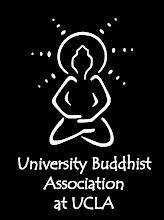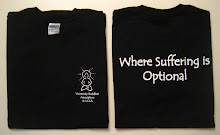We are pleased to announce an upcoming talk titled "Asian Images Inside-Out: What Can We Learn From the Contents of East Asian Statues?" given by Prof. James Robson of Harvard University.
Friday, December 05, 2008
3:00 PM - 4:30 PM
243 Royce Hall, UCLA
Los Angeles, CA 90095
Open to the public. Campus parking is available for $9.
"Museums throughout the world are filled with a variety of Asian religious images and icons, depictions of Buddhas, guardian deities, and saintly figures, which are usually rendered in stone, metal, wood, clay or lacquer. The icons and images in those collections tend to be examples of what is termed “elite” or “high” art and are often representations of gods and deities from a standard pantheon comprised of popular national deities and common Buddhist figures. It is now clear, however, that a different class of images and icons also circulated at a more diffused level of society and we are now also aware of a variety of images that were filled with different kinds of contents. The contents of those images might include Buddhist texts, relic fragments, symbolic organs, or consecration certificates. In this talk I intend ask what can we learn when we shift our gaze from external aesthetics to explore what is found inside images? How did the practice of interring things inside of images develop? How has the discourse on idolatry and iconoclasm conditioned the reception of these images? What new insights can be gained when we shift our concerns from traditional issues about the genesis and aesthetics of images, to the function of icons as they are deployed in social and ritual contexts? A satisfactory engagement with any of those questions will entail a substantial reorientation of our previous views about those objects and what inspired their production."
For more information, please go to http://www.international.ucla.edu/buddhist/.
Thank you for your interest.
UCLA Center of Buddhist Studies
About the UBA
The University Buddhist Association of UCLA is an organization of students, faculty, and community members who come together to learn about and practice Buddhism. We're a non-sectarian Buddhist group that welcomes all Buddhists and non-Buddhist of all faiths and traditions.
If you're interested in learning more about the UCLA Buddhist community, please come to our meetings.
When: Every Tuesday, 5:30 - 7:00pm
Where: University Catholic Center
633 Gayley Avenue
Los Angeles, CA 90024
If you have any questions, please contact us at uba.ucla.online@gmail.com.
If you're interested in learning more about the UCLA Buddhist community, please come to our meetings.
When: Every Tuesday, 5:30 - 7:00pm
Where: University Catholic Center
633 Gayley Avenue
Los Angeles, CA 90024
If you have any questions, please contact us at uba.ucla.online@gmail.com.

Custom Search
Subscribe to:
Post Comments (Atom)





No comments:
Post a Comment